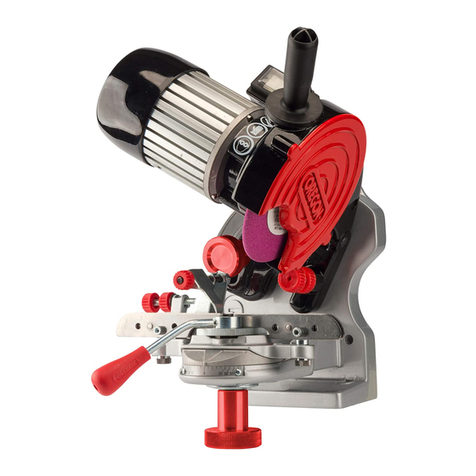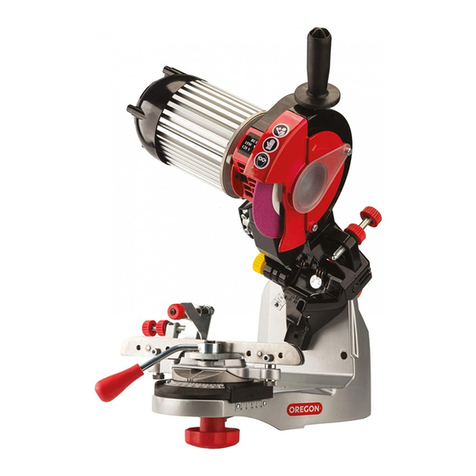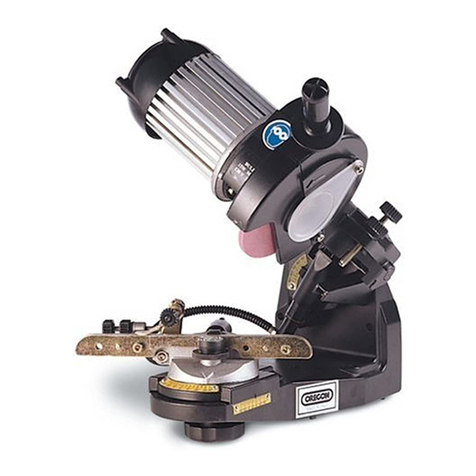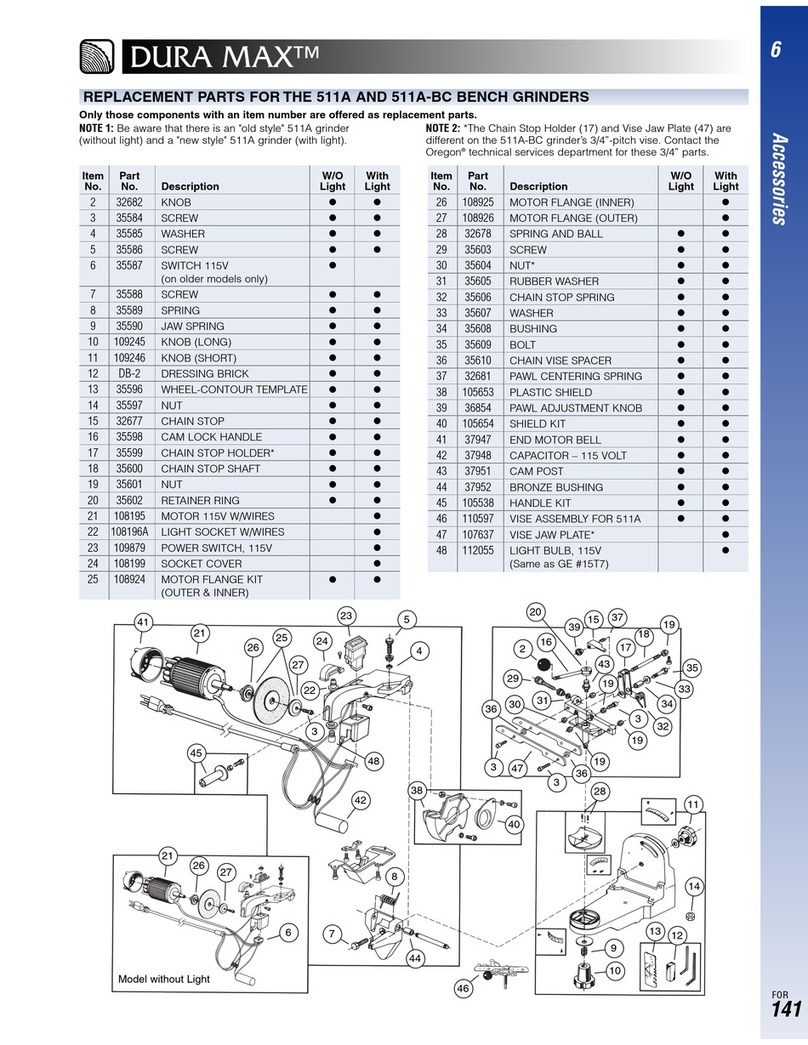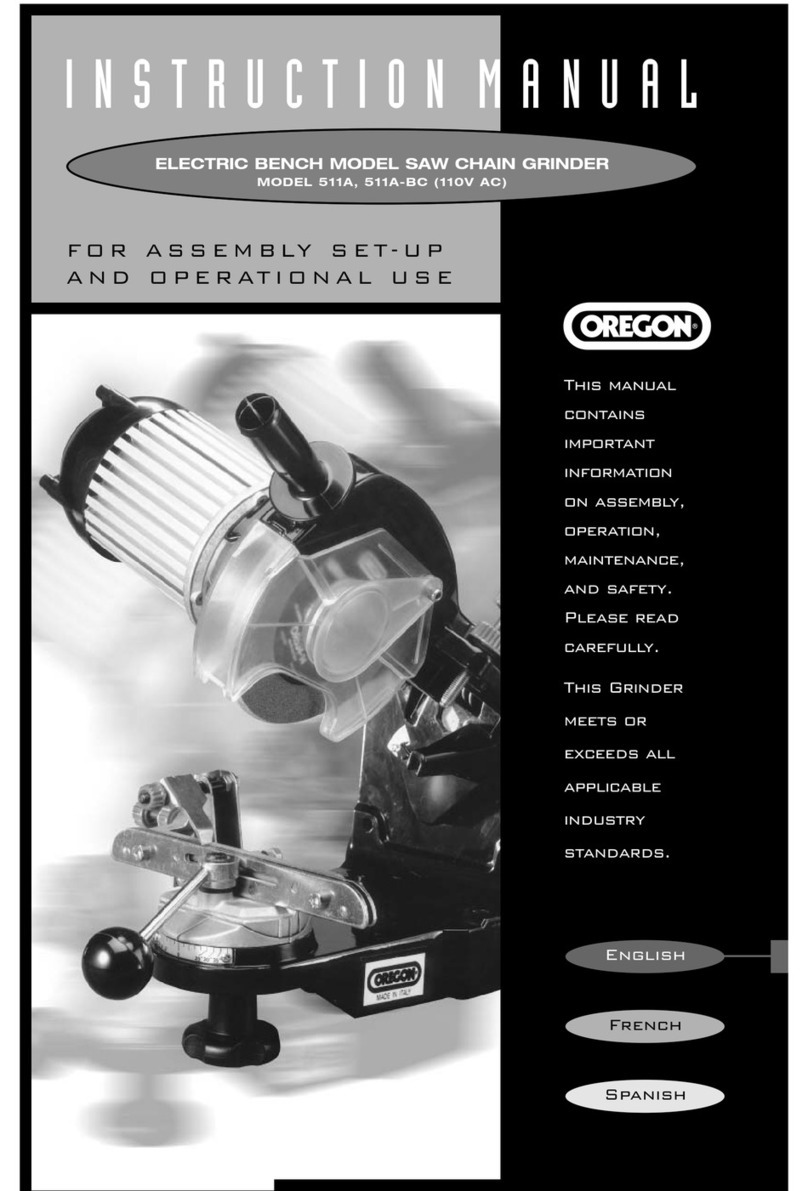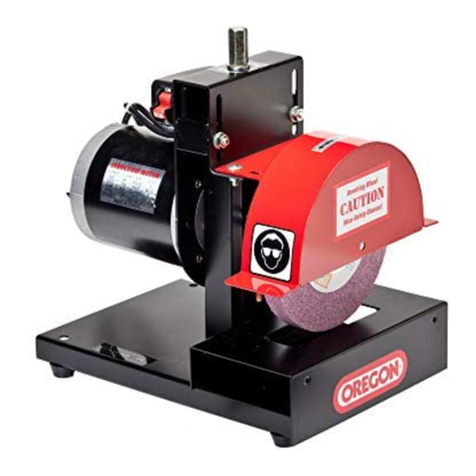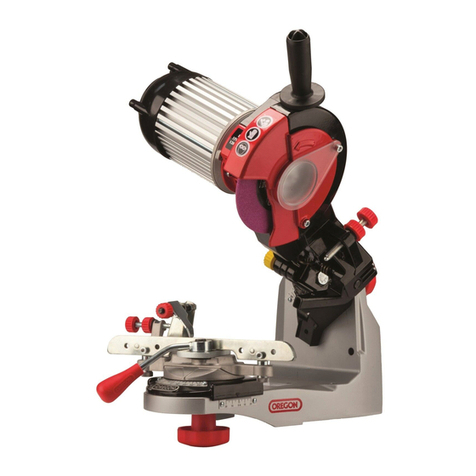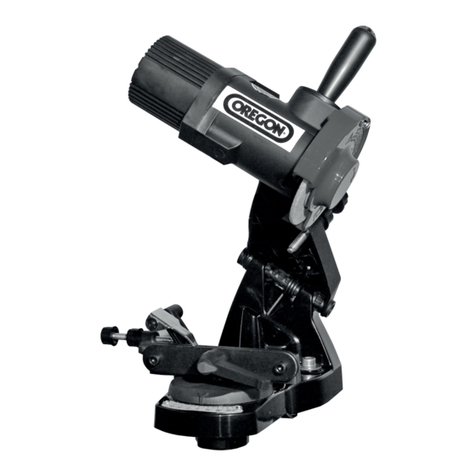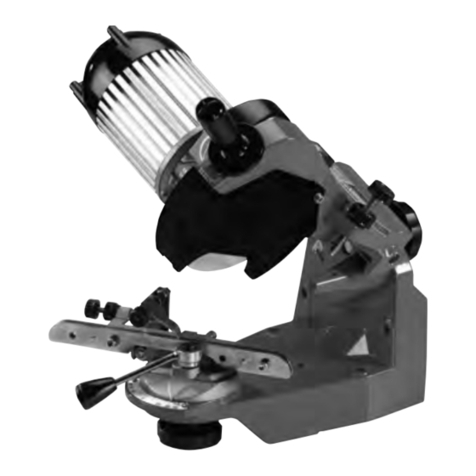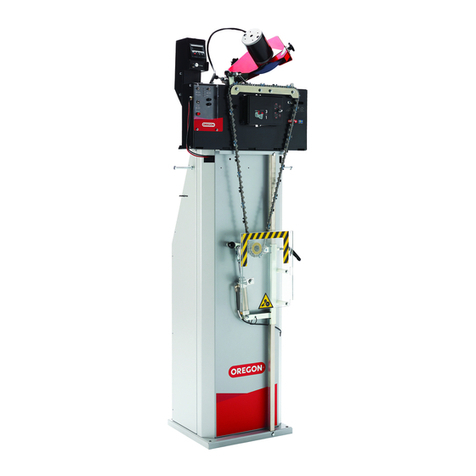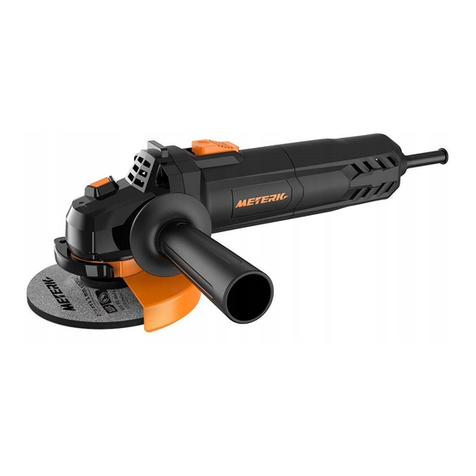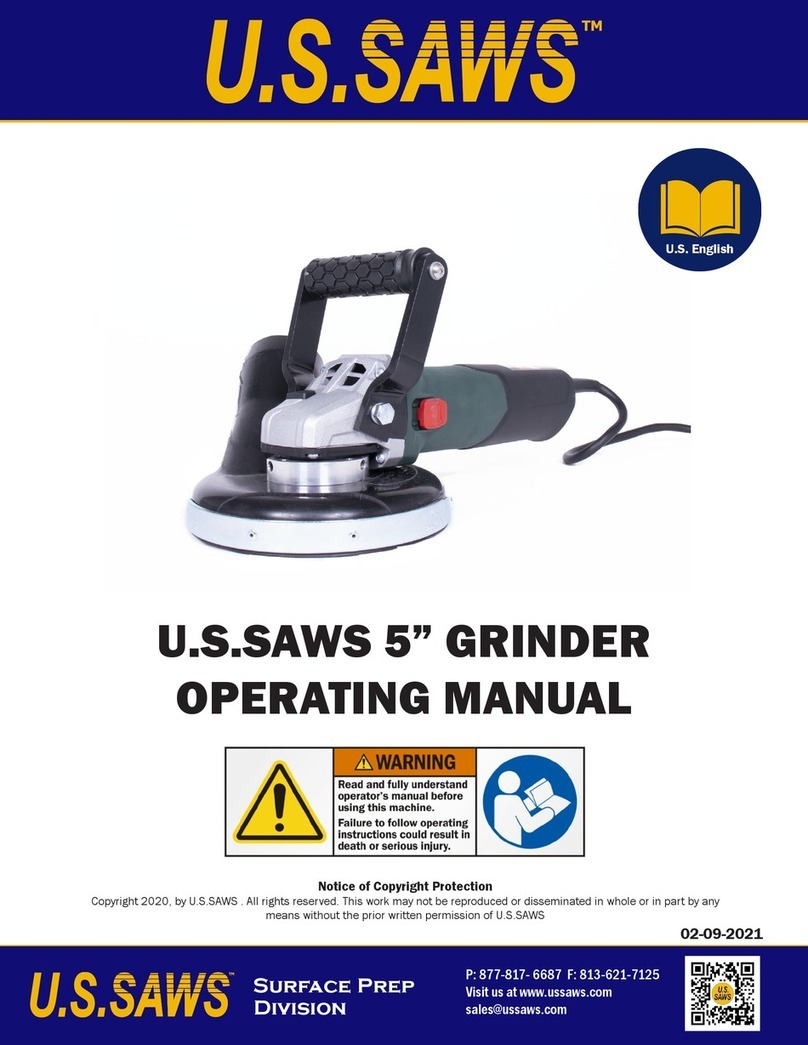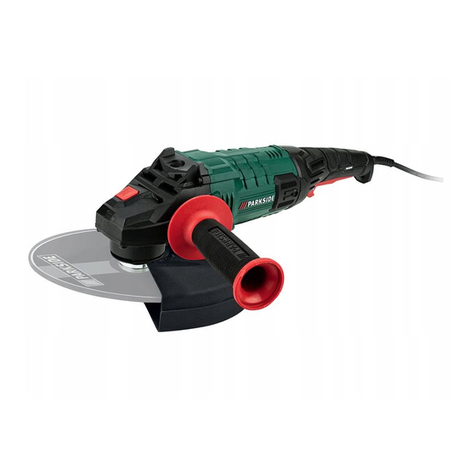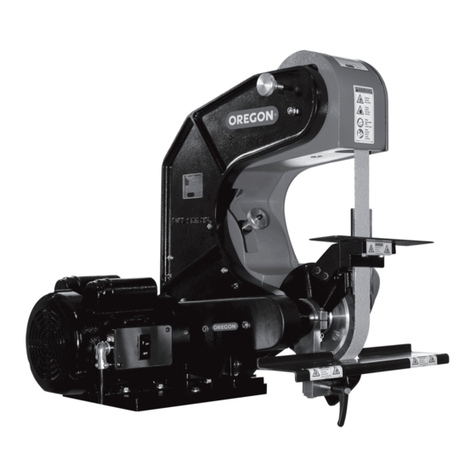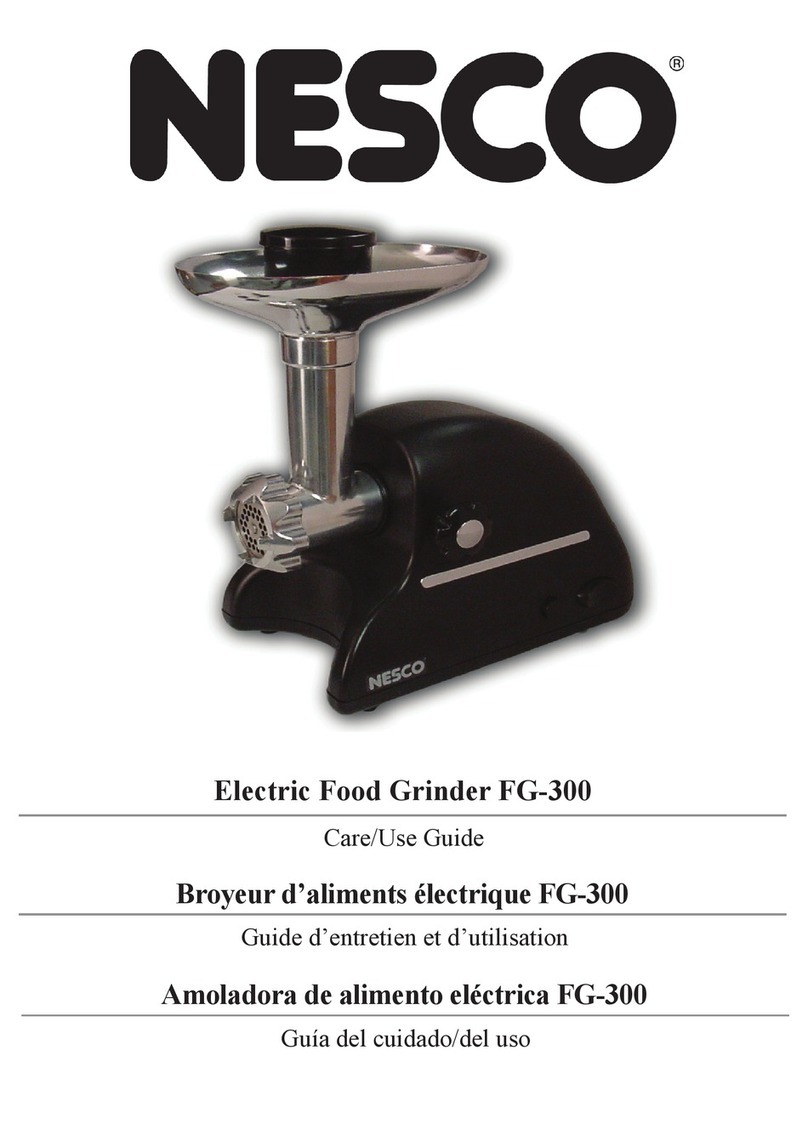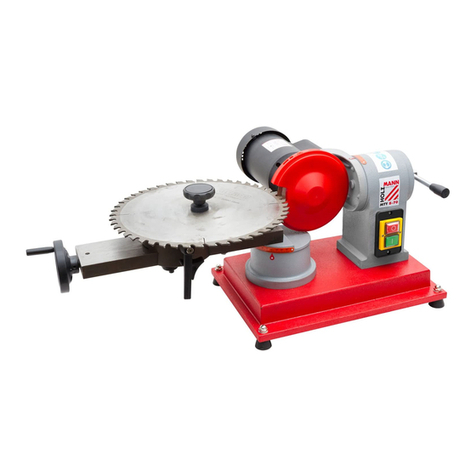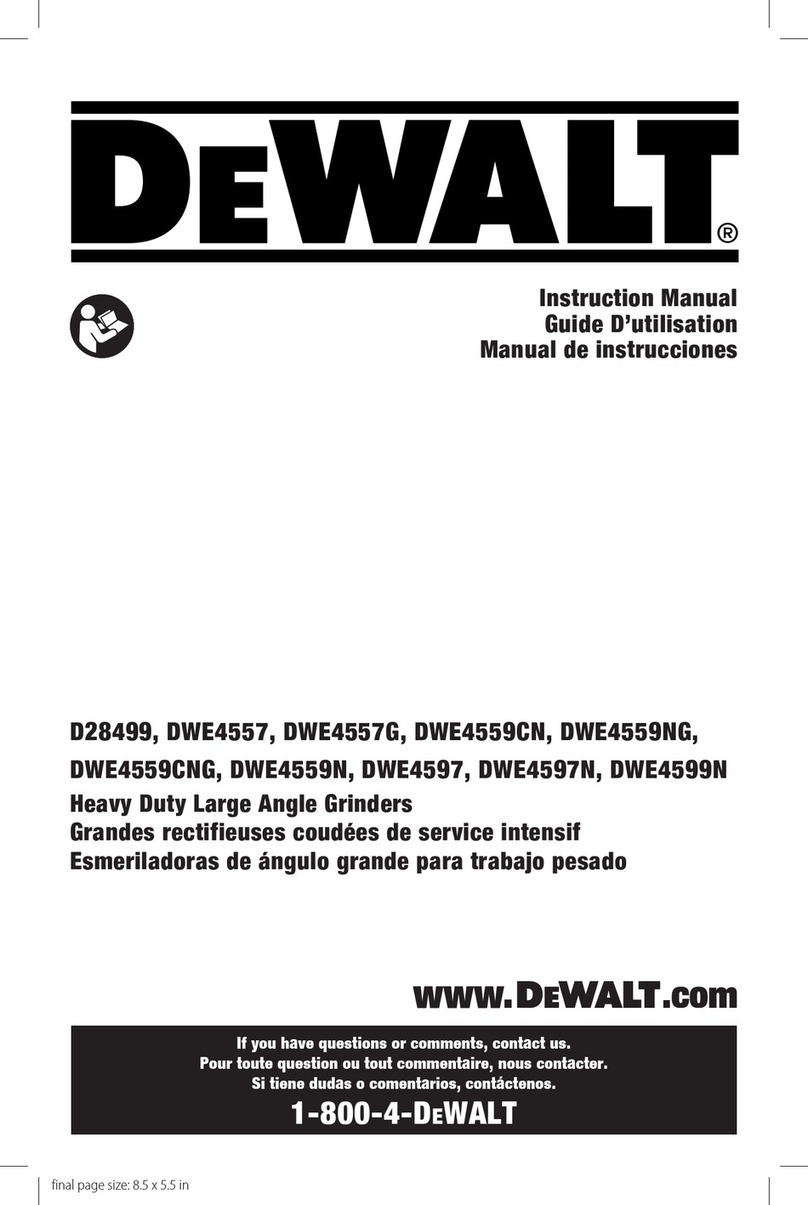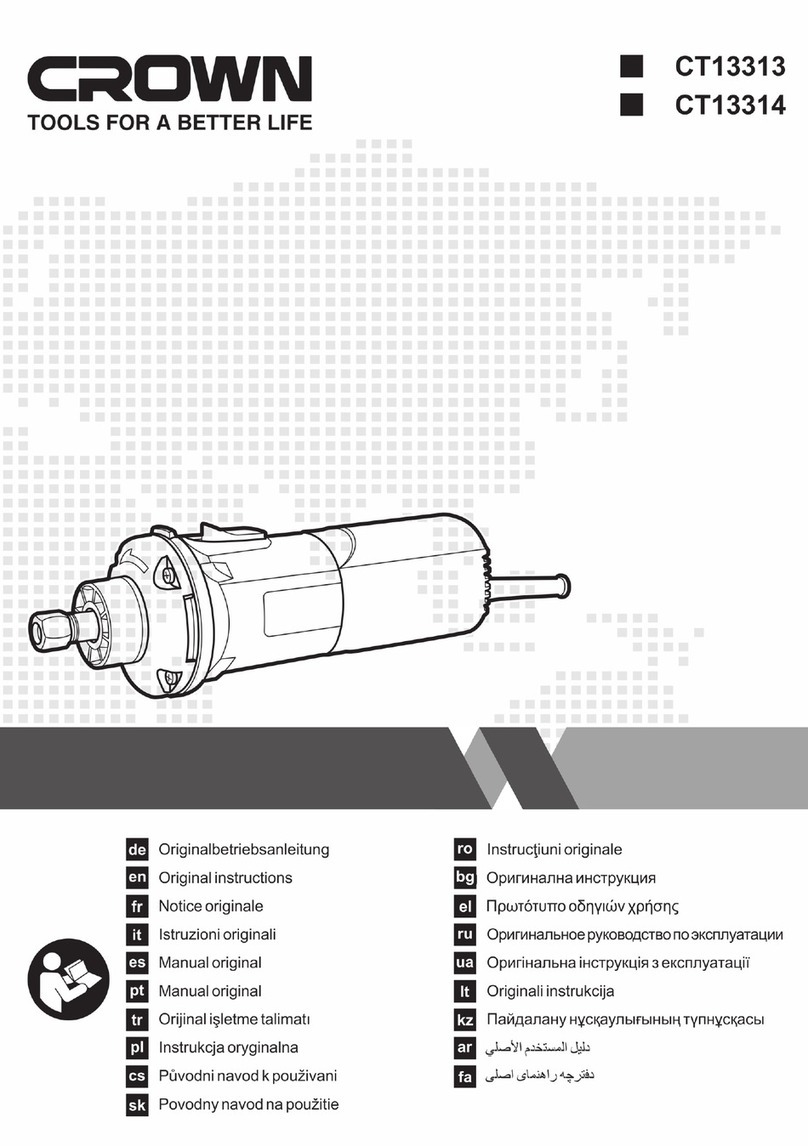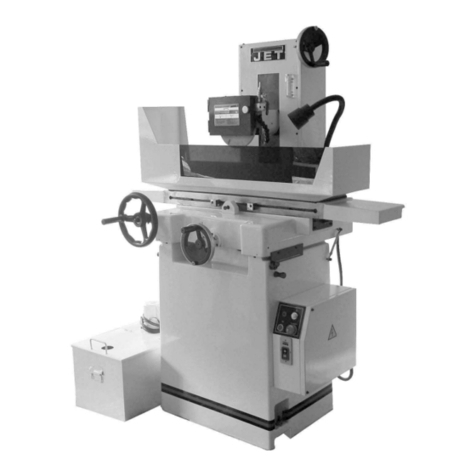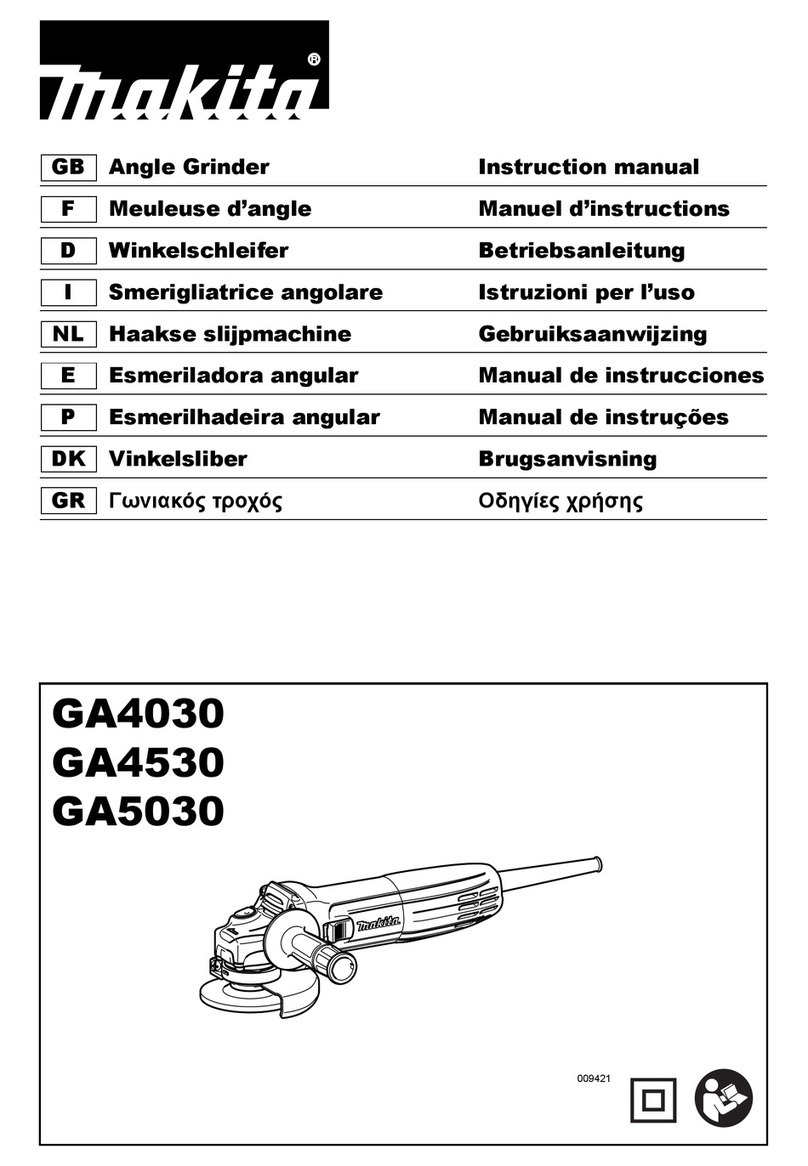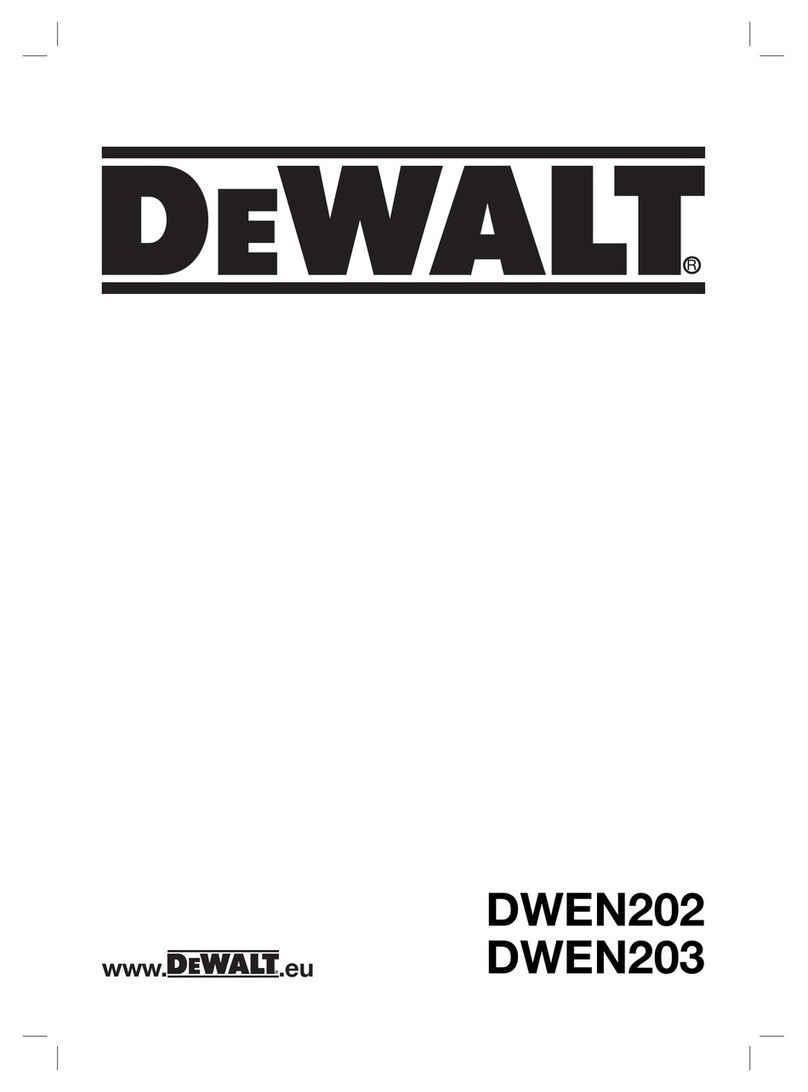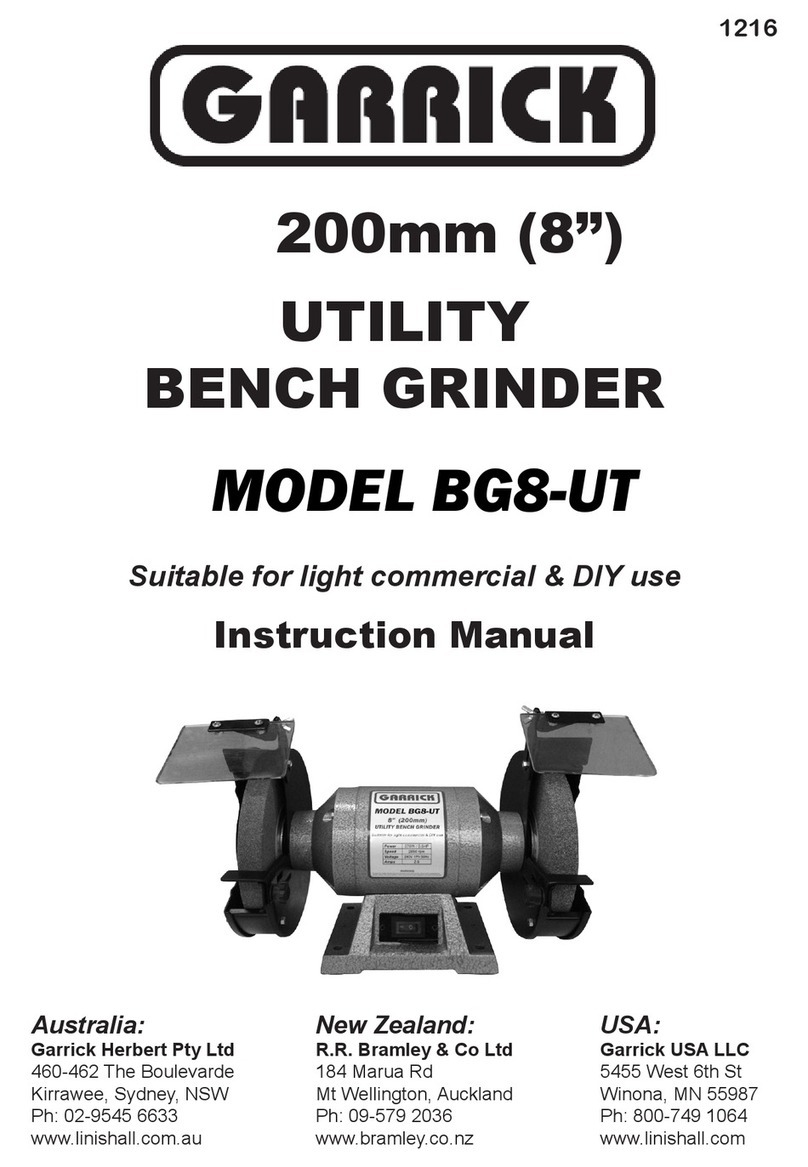
2
Safety Requirements
OPERATOR, AND OPERATING AREA SAFETY
Serious injury or death may occur if minimum safety
precautions are not understood, and obeyed by
operators and those other persons who may be in
the immediate vicinity of the grinder. Persons who
operate or are in the immediate vicinity of the grinder
must be properly trained in, and use minimum safety
precautions and procedures for such machinery.
PERSONAL PROTECTION EQUIPMENT, SUCH AS
GRINDING GLOVES, HEARING PROTECTION, AND
SAFETY GLASSES MUST BE WORN WHEN USING THIS
EQUIPMENT. CHECK WITH YOUR COMPANY’S SAFETY
OFFICER FOR OTHER SAFETY REQUIREMENTS.
MINIMUM SAFETY REQUIREMENTS TO
OPERATE, OR WORK IN THE IMMEDIATE
VICINITY OF SUBJECT EQUIPMENT:
1. Read and understand all operating instructions,
manuals, labels, and other information
provided with the equipment.
2. Train operators and others in safe operating
practices. Post these instructions so they are
available for future reference and new operators.
3. Don’t expose the grinder to rain, or use the
grinder in damp or wet locations. Don’t use the
grinder if the power cord is damaged or wet.
4. Keep the work area well lit.
5. Do not use the grinder near ammable liquids or
gases. Sparks from the grinder can cause res.
6. Prevent body contact with grounded
surfaces, such as pipes or radiators.
7. Disconnect the power source when
the grinder is not in use.
8. Always keep electrical cords clear of rotating
parts and belts when in motion.
9. Electrical installation must be in accordance
with applicable codes and regulations.
10. Keep all visitors away from the grinder when
in use. Make sure visitors do not contact
the grinder or its electrical cord.
11. Do not wear loose clothing or jewelry. Non-skid
footwear is recommended when working with
the grinder. Wear protective hair coverings to
contain long hair. Wear proper safety equipment
and clothing to protect eyes, hands, face, arms,
legs, feet, and body from ying debris, forcibly
ejected work pieces and broken abrasive belts.
12. Use safety glasses. Everyday eyewear does
not have impact resistance lenses.
13. Wear a dust mask. Some of the dust created by
grinding activities may contain chemicals known to
cause cancer, birth defects or other harm. Provide
adequate ventilation. You may wish to install a
spark and debris arresting apparatus to contain
dust and debris, and to suppress sparks, further
limiting inhalation risk, and risk of re or explosion.
14. Keep all guards in place, properly
adjusted, and in working order.
15. Do not reach inside the safety guards
while the grinder is running.
16. Do not operate this grinder if the gap (nip point)
between a moving belt, wheel or disc, and the
work support surface exceeds 1/8" or 3.175 mm.
17. Never position the work rest table at an acute
angle between the top of the work rest table and
the moving belt or wheel. Doing so will create a
“nip point”that can cause serious injury should an
operator’s body part become entangled (pulled
into) the nip point created by this acute angle.
18. Do not operate this machine if the gap between the
moving abrasive belt, disc or wheel and the adjacent
face of the work rest (or table) will allow passage
of the work piece through the gap (nip point).
19. Note that certain alloys such as titanium may create
conditions where grinding debris can accumulate
in a tight gap creating a potential re hazard.
Failure to heed this warning may cause serious
bodily harm to the operator and/or bystanders.
When in doubt, consult with your safety ocer.
20. NEVER use this grinder if you are not properly
trained in its operations and safe use. If in
doubt, stop and ask for guidance.
21. Avoid contact with the belt. When running, the
abrasive belt is an aggressive cutting tool.
22. Always hold the work piece rmly and wear gloves
when grinding and apply steady pressure. Use
work piece holding devices whenever possible
to diminish the possibility that person will
come in contact with moving machine pieces,
or spark/debris output from the grinder.
23. Bolt the machine to a structurally sound
surface or pedestal. If a pedestal is used,
bolt the pedestal securely to the oor.
24. Before servicing, disconnect the grinder form the
power source. Never leave the grinder running
unattended. Turn the power o, and don’t leave
until the grinder comes to a complete stop.
25. Do not use damaged belts. Belts that
show wear should be discarded.


